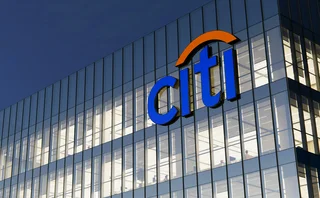
FX industry shows little appetite for single API
Market players sceptical over need for standard programming code to connect clients with services

For the past four years, Citi has been working to fix what it sees as a problem with its foreign exchange trading services: a multitude of programming codes used to connect clients with its various services and products.
These so-called application programming interfaces (APIs) also differ between banks and other liquidity providers (LPs). But not everyone agrees with Citi that it is desirable, or feasible, to replace them with a single industry API. The worry is that doing so will stifle
Only users who have a paid subscription or are part of a corporate subscription are able to print or copy content.
To access these options, along with all other subscription benefits, please contact customer services - www.fx-markets.com/static/contact-us, or view our subscription options here: https://subscriptions.fx-markets.com/subscribe
You are currently unable to print this content. Please contact customer services - www.fx-markets.com/static/contact-us to find out more.
You are currently unable to copy this content. Please contact info@fx-markets.com to find out more.
Copyright Infopro Digital Limited. All rights reserved.
As outlined in our terms and conditions, https://www.infopro-digital.com/terms-and-conditions/subscriptions/ (point 2.4), printing is limited to a single copy.
If you would like to purchase additional rights please email info@fx-markets.com
Copyright Infopro Digital Limited. All rights reserved.
You may share this content using our article tools. As outlined in our terms and conditions, https://www.infopro-digital.com/terms-and-conditions/subscriptions/ (clause 2.4), an Authorised User may only make one copy of the materials for their own personal use. You must also comply with the restrictions in clause 2.5.
If you would like to purchase additional rights please email info@fx-markets.com
More on Tech and data
New FX swap matching platform aims to bridge voice and e-trading
FXswapX seeks to electronify “the last bastion of voice trading” in the interdealer market
Adoption of standard FX reject code too slow – Schroders trader
Standardised codes aim to improve consistency and transparency around why trades are rejected
Mastering the millisecond market
Leveraging millisecond-level data could unlock FX trading opportunities, says LMAX Group’s Sundaram
Citi rolls out revamped SDP in emerging markets
Unified API will boost electronic pricing and automation for restricted currencies, says bank
For AI’s magic hammer, every problem becomes a nail
Risk.net survey finds banks embracing a twin-track approach to AI in the front office: productivity tools today; transformation tomorrow
FX automation key to post-T+1 success, say custodians
Custody banks saw uptick in demand for automated FX execution to tackle T+1 challenges
Is AI a double-edged sword?
How can firms address – and safeguard themselves from – potential execution algorithm risks, asks SGX’s Trivedi
Buy-siders call for FX options workflow overhaul
FX Markets Europe: Traders say electronification of FX options is still lagging








